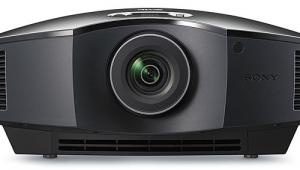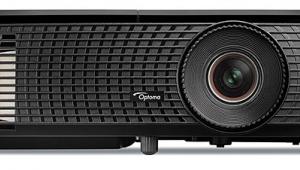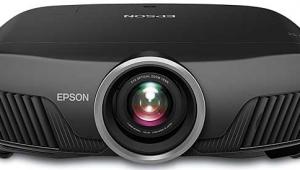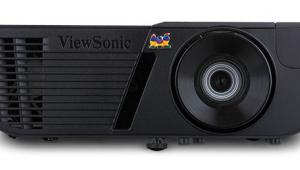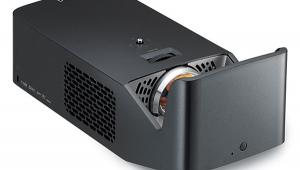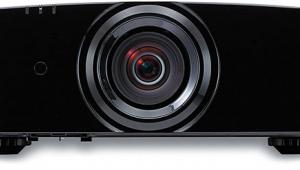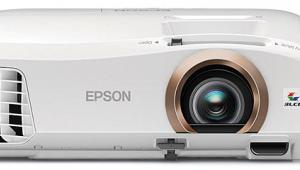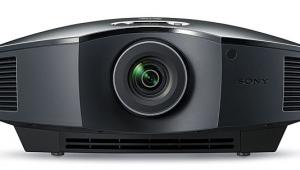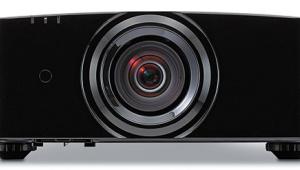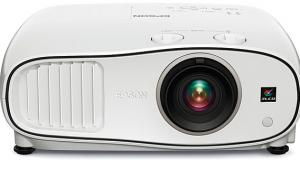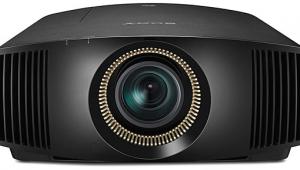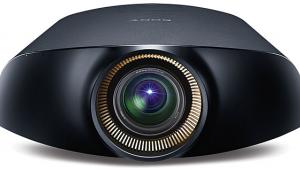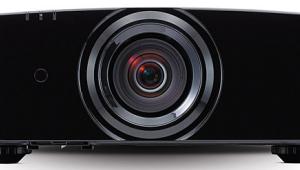Panasonic PT-AE8000U 3D LCD Projector
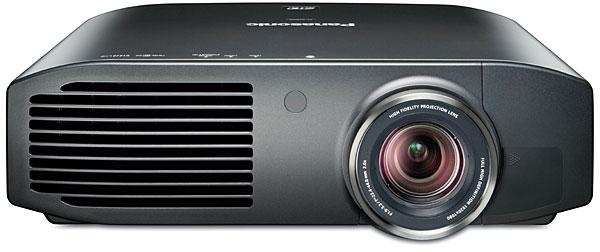
Price: $3,499 At A Glance: Crisp and detailed picture • Good black levels • Thorough but com- plex calibration controls
Panasonic entered the home theater projector market in 2001. But the company already had decades of experience in the business projector world, beginning with CRTs in 1975 and later moving into its current mix of LCDs and DLPs. All of the company’s home theater designs have used LCD imaging chips, however, and the PT-AE8000U is the latest link in a long chain dating back to that 2001 model, the PT-AE100.
Around the Block
The PT-AE8000U is average sized for a home theater projector. The case is well sealed, with no obvious light leakage from its intake and exhaust ports. The fan noise is low in the Eco lamp mode but more audible (though not distracting) in the Normal (high) lamp setting I used for all of my tests and viewing.
On a 100-inch-diagonal (87-inch-wide), 16:9 screen, the Panasonic’s minimum and maximum throw distances are 117 and 236 inches. The lens has motorized zoom and focus, with six available memories for different settings. But the lens shift is manual. When you alter the zoom setting, the center of the picture shifts vertically and must be manually readjusted. This makes the lens memories less than useful for their two most obvious applications: to accommodate a 2.35:1 screen for a constant-height setup without the need for an anamorphic lens, and for use with two different screens (such as one for 2D and a separate, highergain model for 3D).
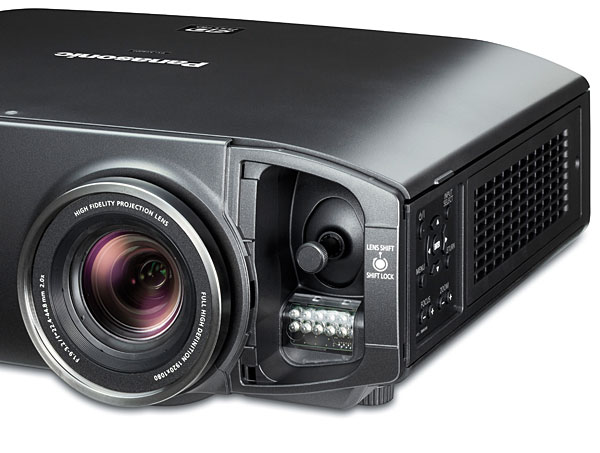
The projector has seven picture modes, but none of them was particularly accurate out of the box—not even the one tantalizingly labeled REC709. There are also 13 color temperature settings, together with separate red, green, and blue high-level (Contrast) and low-level (Brightness) controls for further fine-tuning the white balance. The sharpness control can be used in either its Simple (overall) or Advanced (both horizontal and vertical adjustments) mode.
There’s a dynamic iris to enhance the contrast ratio, plus a full color management system (CMS). The CMS Cursor mode lets you select a portion of the image and tweak its color by eye. We don’t recommend this; the separate RGBCMY mode is the best choice for a traditional calibration.
There are eight Advanced Gamma settings that can be used as is or customized at 15 steps across the brightness range. The adjustments may be made in white alone (the overall gamma) or also, if desired, in red, green, and blue gamma. There’s also a Simple gamma option that offers adjustment of the (white) gamma at Low, Mid, and High brightness.
Playing randomly with the Color Temperature, Color Management, and Gamma controls will do little good if you lack the proper measuring tools and the skill to use them. Re- member the old story about the chances of 1,000 chimps pound- ing on 1,000 keyboards for 1,000 years and replicating the complete works of Shakespeare? You’ll have about the same odds of coming up with a well-calibrated picture. But you can’t damage anything by fiddling with these adjustments, and they’re easy to reset.
The projector also has a unique Waveform Monitor said to offer an accurate means of setting the luminance (brightness) level. And there’s a split-screen adjustment to highlight a particular area of the picture you’re trying to alter. I didn’t find either of these necessary and didn’t use them, but some users might.

Panasonic’s Frame Creation feature is designed to reduce motion blur. It’s usable in both 2D and 3D, but in 3D only on 1080p/24 sources or interlaced sources employing 3:2 pulldown (that is, film-based material). In 2D, with Frame Creation off and a 1080p/24 source, the projector refreshes its image at 196 hertz.
In all other situations, Frame Creation on or off, the refresh rate is 240 Hz in 2D and 480 Hz (240 Hz for each eye) in 3D. The extra frames required to reach these refresh rates are produced either by interpolation with Frame Creation on (or a combination of interpolation and repetition) or simply by repetition with it off.
Like all interpolation features, Frame Creation results in glassysmooth, slick motion, even in its lowest setting (Mode 1). I hate what this does to the look of film-based material (it’s often called the soap opera effect), and apart from checking it out, I left it off.
There are multiple memories for many of the previously mentioned settings, and several different setups can be saved in the projector’s multiple Profiles. If you go the full calibration route, your friendly neighborhood calibrator will likely save a limited number of Profiles to avoid giving you a confusing array of options. I’d recommend, at minimum, separate Profiles for 2D and 3D.
The 3D transmitter is built into the projector, but an outboard transmitter is also available to cover a wider seating area, if needed. The 3D menu offers the usual range of controls, including a 2D-to-3D conversion mode (no more effective than others we’ve seen) and a 3D Eyewear Brightness adjustment.
